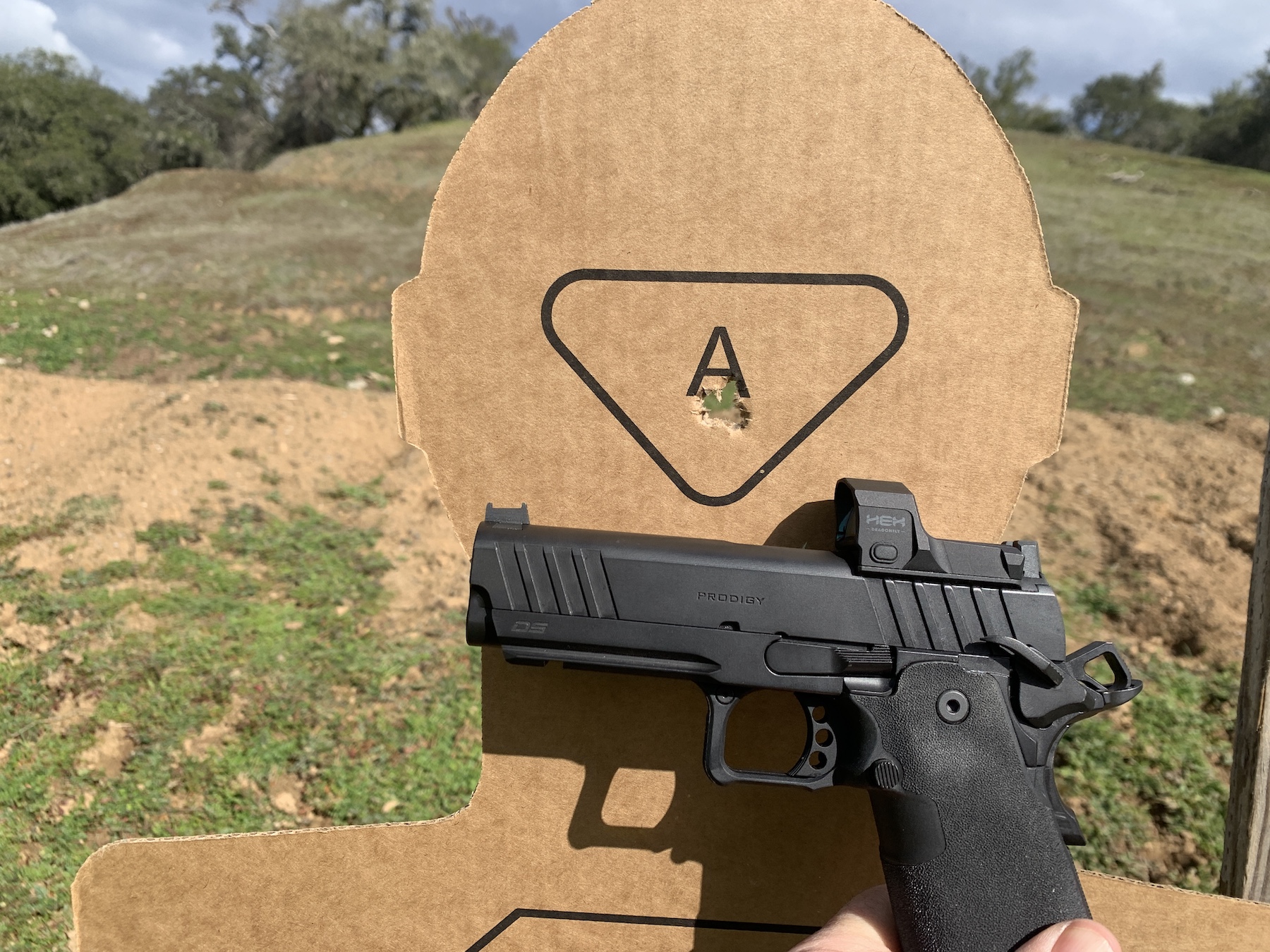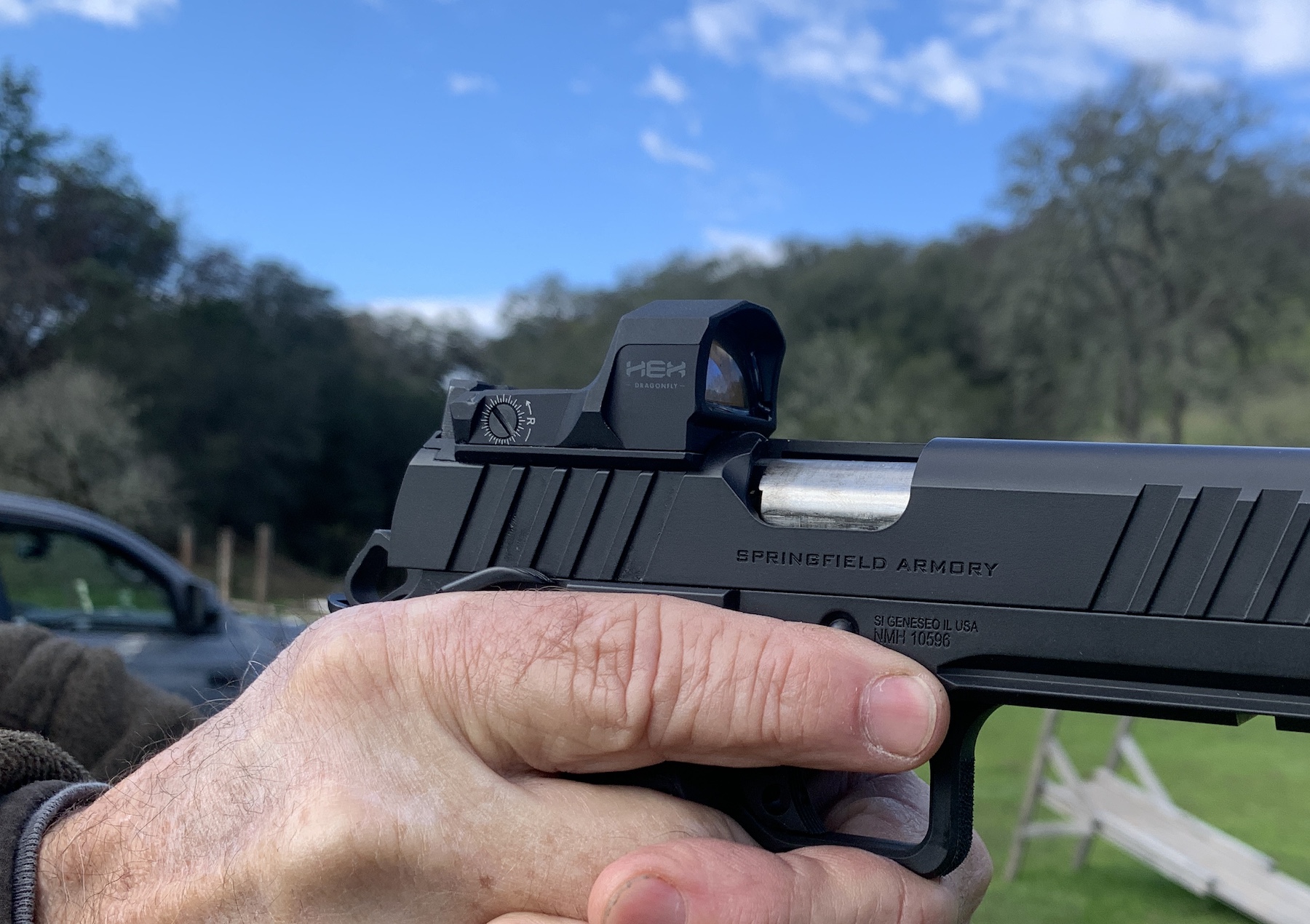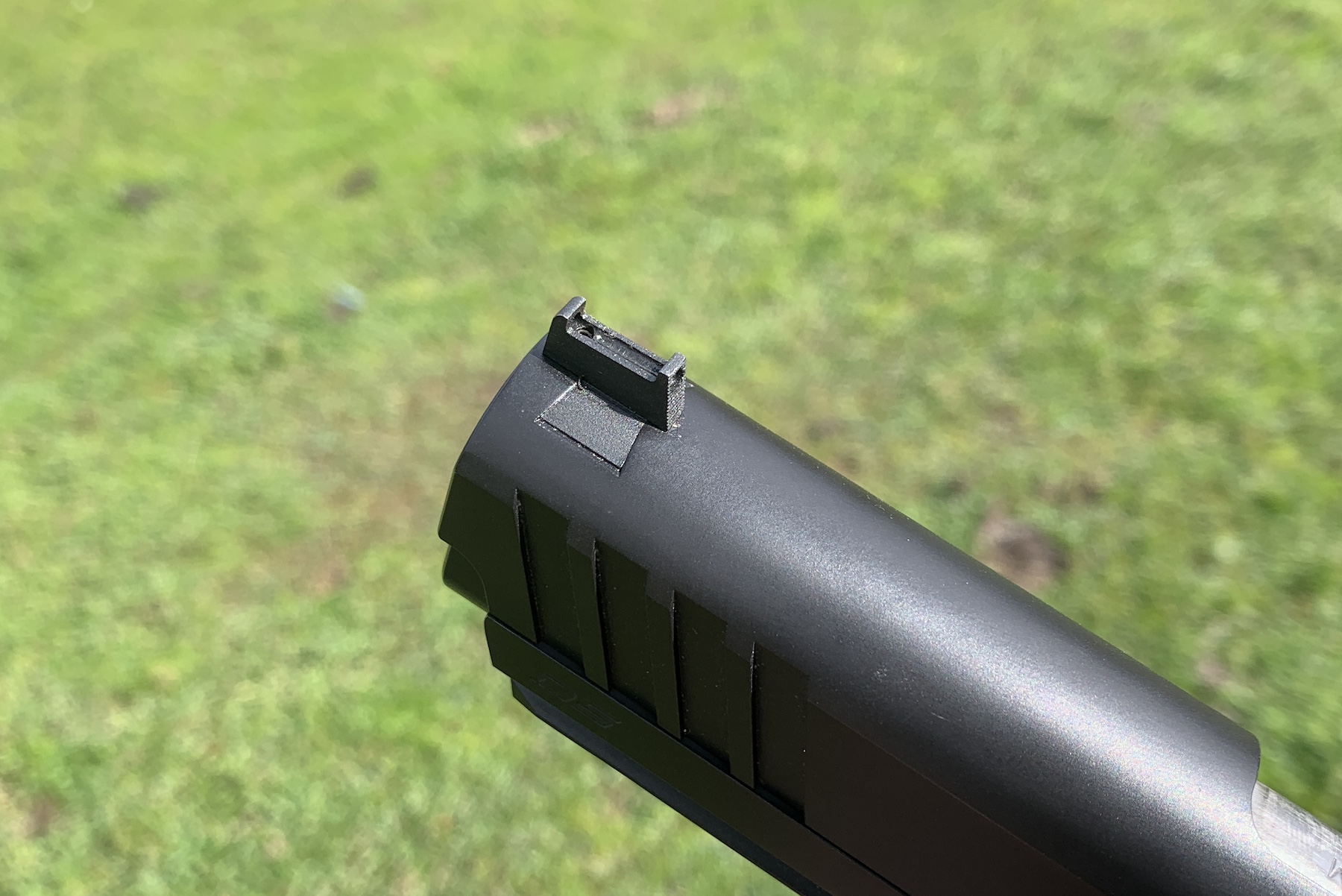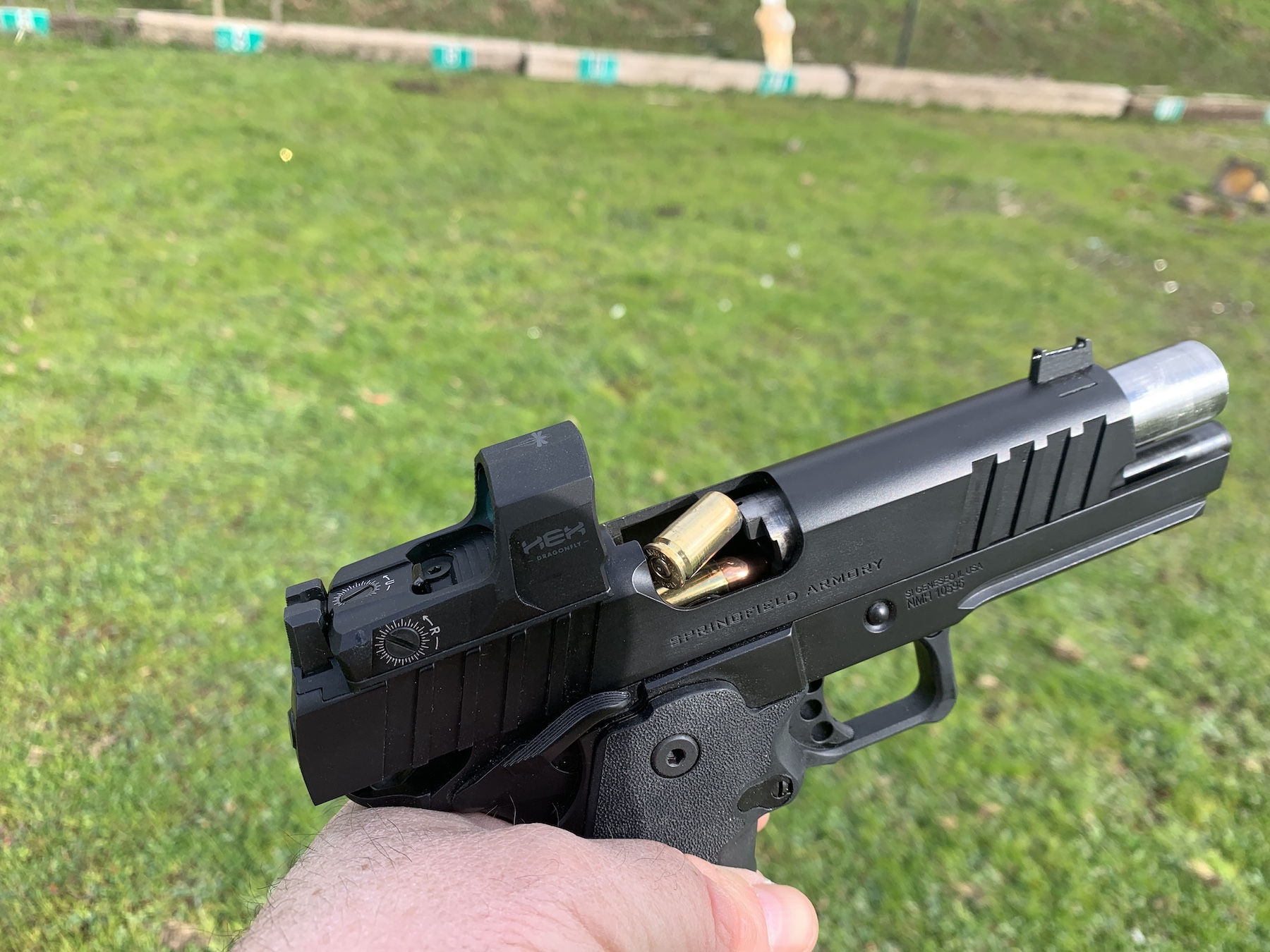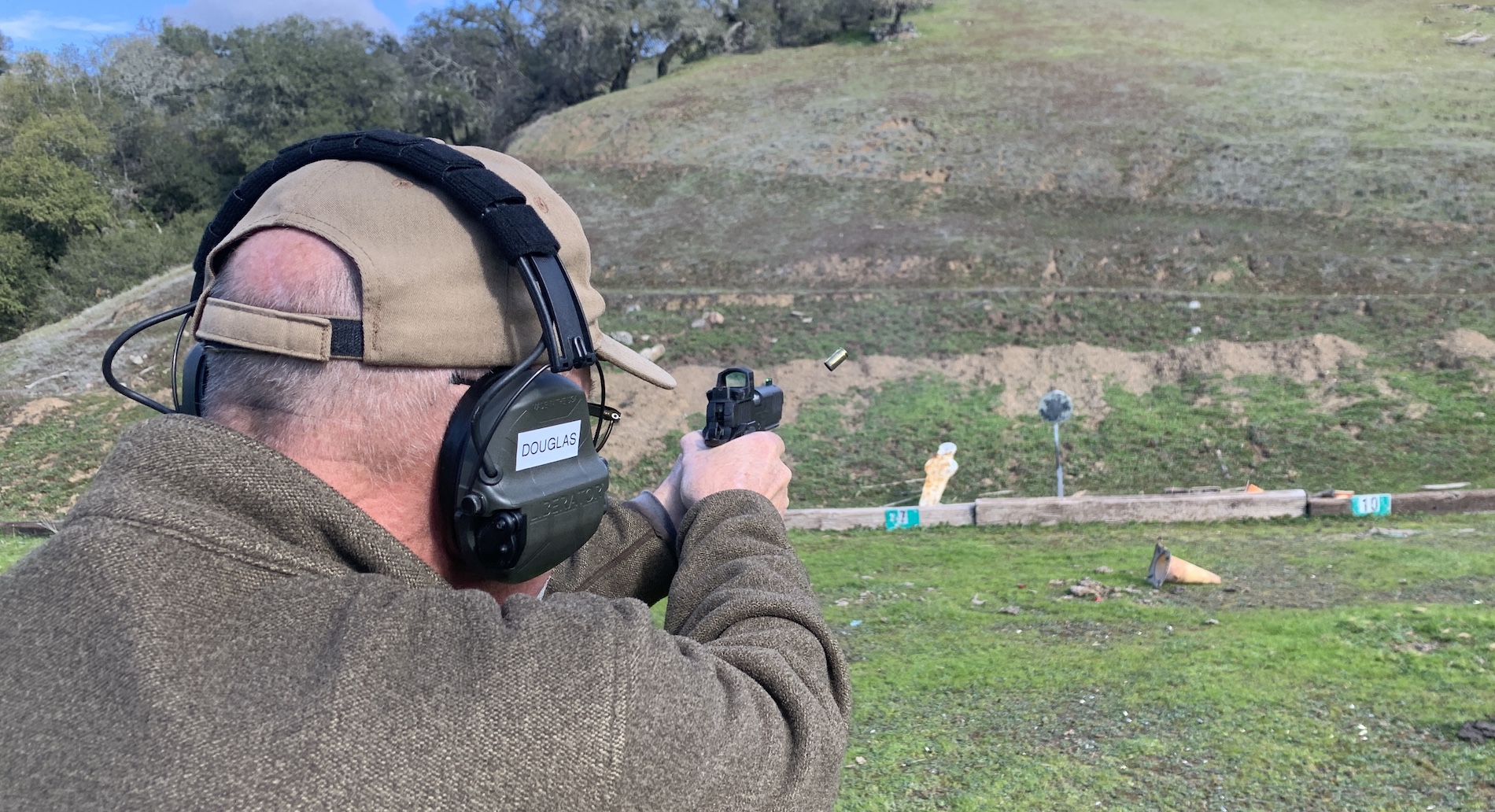
feature_3191
This is the second part of my look into the 1911 DS from Springfield, better known as the Prodigy.
Accuracy
I cannot and will not complain about the accuracy of the Prodigy, aka – Springfield Armory’s 1911 DS (Double Stack).
During the second range session, with my old gang unit partner, I was shooting on the reduced head scoring of Shoot Steel’s cardboard target. At 5 yards, all three rounds of my group were touching. They were at the bottom of the letter “A.” Moving back to ten yards, I fired another three-shot group, again using the “A” as the aiming point. Those three rounds touched each other and the hole from the first three.
Yes, it is still accurate at distance, but I don’t have the photos to support it.
While I’m not in the “fit and finish” crowd. There is a casting line on the frame that a greater level of attention to detail would have addressed. It is not problematic when shooting, but it initially made me wonder if the magazine well or grip was compromised.
Hex Sight
I have seen other shooters replace Springfield’s HEX sight. I did not feel the need to do that.
The mounting system has proven solid. I have not noticed any issues with the optic coming loose. As mentioned before, Springfield adopted Agency Arms’ AOS mounting system.
Springfield reports one hundred-thousand-hour battery life using a CR2032 battery.
It has a 3.5-minute of angle (MOA) red dot. Adjustments are measured by 1MOA with 160 minutes of adjustment for windage and elevation.
One concern I have is the 8-hour auto shut-off that mine came with. Coupled with this is the requirement for manually turning the optic back on. In other words, there is no shake-awake feature. That becomes a concern when more law enforcement agencies going from 10-hour shifts up to 12-hour (or longer) shifts. That useful life could drive end users to other optic choices.
During a follow-on range session, the fiber optic rod in the front sight departed from the front sight. Fortunately, replacing it was an easy fix.
Magazines
I used magazines from both Springfield Armory and Staccato during the evaluation. With one exception, all the magazines ran fine. The one exception was an older, well-used Staccato magazine with a weakened spring. It failed to feed a single factory flat point load.
Function
Reportedly, this has been the weakest part of the Prodigy so far. While many buyers have been happy with their pistols’ function, there were enough reports about feeding issues that were concerning.
I experienced some of these as well. Occasionally, the next round would not completely chamber, and the pistol would not go into battery. At times, it looked as if a bump or rough spot between the slide and frame interrupted the feeding and chambering parts of the function cycle.
During my time with the Prodigy, I spoke with a good friend and competent gunsmith – Bryan Eastridge, of Eastridge Training and Consulting.
Initially, Bryan had me change the springs in the pistol – the recoil spring (and the firing pin spring) and the hammer spring. I went with a 10 lbs. recoil spring and an 18 lbs hammer spring. It was Bryan’s opinion that the pistol was oversprung.
“A” Fix
The early Prodigy chambers were too tight.
After examining them, Eastridge realized the fix would involve reaming out the chamber.
One chamber Bryan worked on had a straight wall that measured .380″ and was .750″ deep. He has found that with the proper taper going from .391″ down to .380″ and with the chamber depth extended to .756″ deep, the feeding and chambering issues are resolved. He did this with a Clymer reamer.
In April, I worked with a TV show during a stint at Gunsite. The producer had his more recently made Prodigy with him, which he said did not have any work done to it. I shot a couple of magazines worth of 115grain ball ammunition. That pistol had no stoppages of any kind.
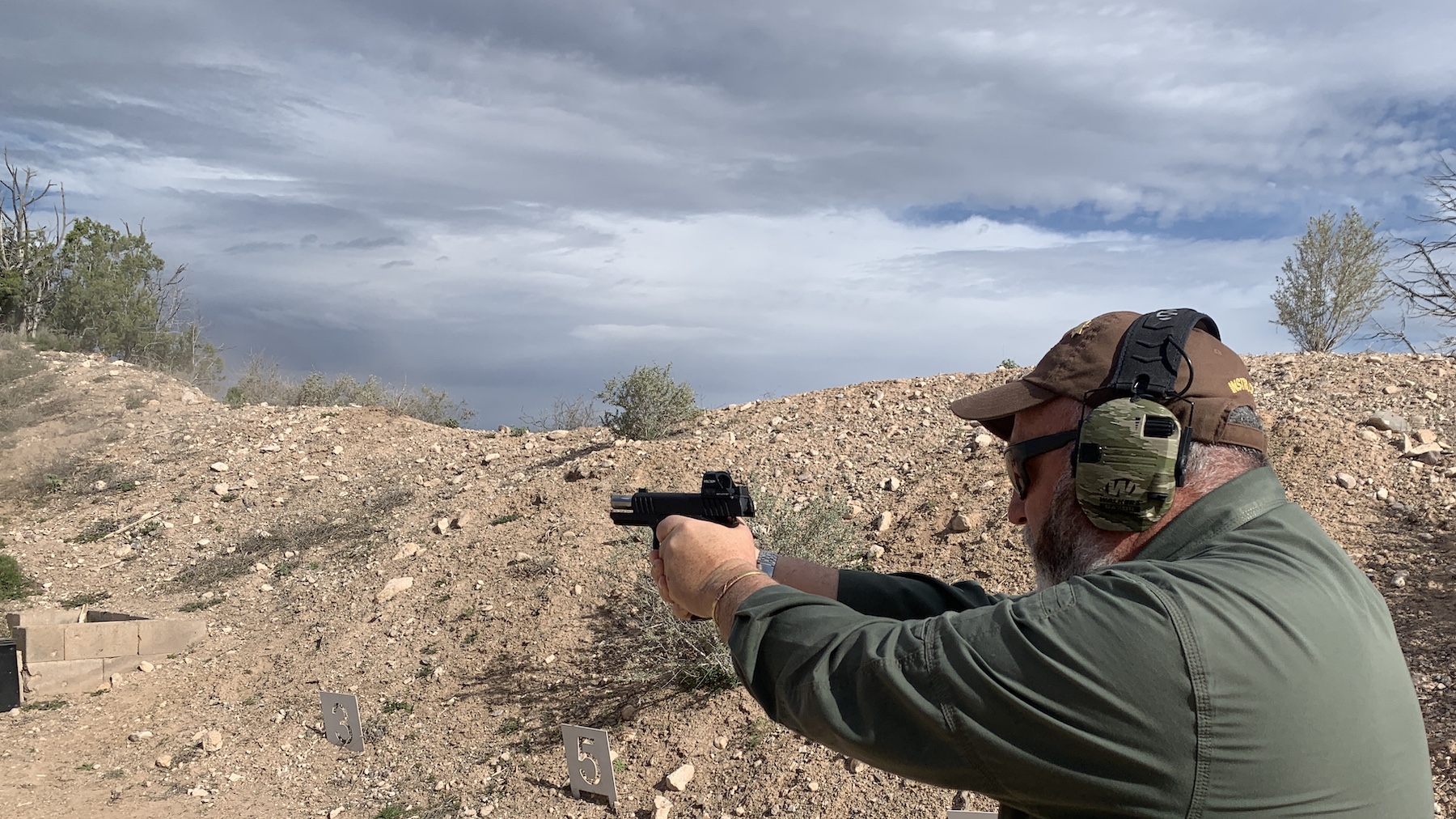
Shooting a new production Prodigy during my last Gunsite trip. Holosun optics easily mount on the AOS system.
Closing Thoughts
As I mentioned in Part 1, I carried custom 1911s for the first twenty-plus years of my career. Those pistols required a fair amount of TLC for a competent gunsmith. I am fine carrying that concept into any of John Moses Browning’s designs.
With minor work (in the grand scheme of things), the Prodigy (the 1911DS) will be a functional defensive or competitive handgun. Little touches that matter to me, like the profiled ambidextrous thumb safeties, were already done. I bought this pistol after the review, and I am looking forward to doing more with my Prodigy.
Resources:
http://www.springfield-armory.com
Part 1 can be found here: https://americancop.com/springfields-prodigy-part-1/


